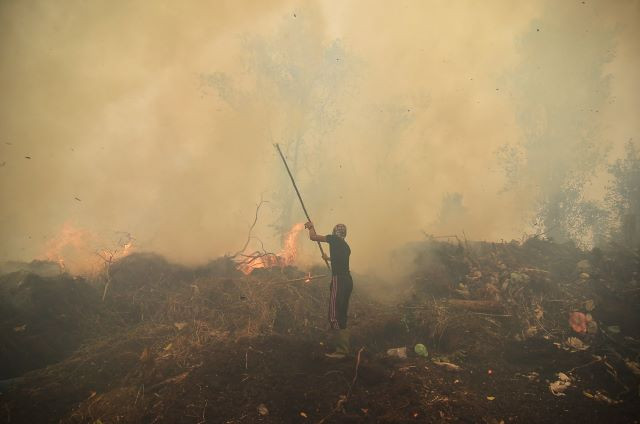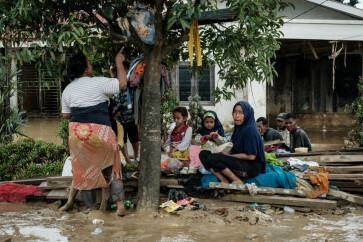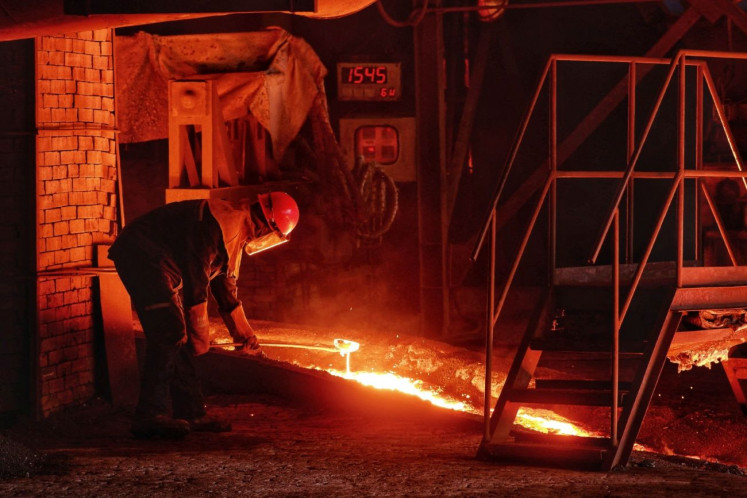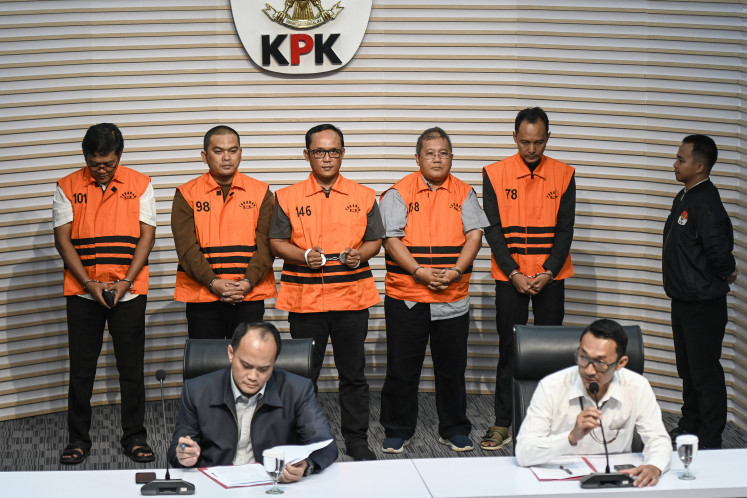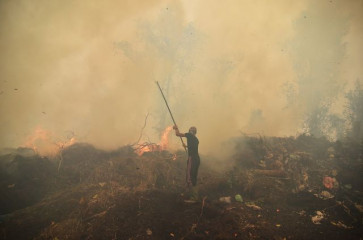Popular Reads
Top Results
Can't find what you're looking for?
View all search resultsPopular Reads
Top Results
Can't find what you're looking for?
View all search resultsFinding the right carbon tax rate in Indonesia
The government should periodically review the carbon tax rate that can prompt businesses to invest in the natural renewable energy sources.
Change text size
Gift Premium Articles
to Anyone
C
limate change has become a global issue that threatens the environment and human life, and one of its causes is the increase in greenhouse gas (GHG) emissions. Based on the latest data from Statistics Indonesia (BPS), GHG increased from 1.335 million tonnes of carbon dioxide equivalent (tCO2e) in 2016 to 1.866 million tCO2e in 2019.
As the state electricity company PLN reported in its Electricity Business Plan, this figure is expected to continue to rise along with the increasing use of fossil fuels (fossil oil, gas and coal). Indonesia's Nationally Determined Contribution (NDC) 2022 document stated that climate change could lead to the potential loss of 0.66-3.45 percent of gross domestic product in Indonesia's economy by 2030.
In response, the government has pledged to achieve net-zero emissions by 2060. As part of it, Indonesia will reduce emissions gradually, which will be around 31.89 percent of the business-as-usual scenario (unconditionally) in 2030, as stated in the Enhanced Nationally Determined Contribution submitted on Sept. 23, 2022. To fulfill the net-zero target ambition, the government has enacted the Tax Harmonization Law No.7/2021, in which one of its articles stipulates that a carbon tax be levied on carbon emissions that harm the environment.
Officials have said a fully-fledged carbon market would likely begin operation in 2025, but the carbon tax kicked under a pilot program in April 2022 for above-cap pollution level at a rate of Rp 30,000 (US$2.09) per ton of CO2e for coal-fired power plants.
The question is whether the tariff is the right rate of carbon tax businesses have to pay to emit every tCO2e to reach the government's ambition. According to the Carbon Tax Guide by the World Bank, the Social Cost of Carbon (SCC) approach is one of the most economically efficient approaches; it matches the carbon tax rate to estimates of the social costs of GHG emissions.
In layperson's terms, the SCC refers to the damages caused by emitting one additional ton of CO2e. Hence, with this approach, the effective carbon tax rate should not fall below the estimates of the SCC. Referring to the Report of the High-Level Commission on Carbon Prices, the High-Level Commission on Carbon Prices requires carbon price of at least $40-80/tCO2 by 2020 and $50-100/tCO2 by 2030 to achieve the Paris temperature target of well below 2 degrees Celsius.
Singapore is the first ASEAN country to introduce a carbon tax under the Carbon Pricing Act No.23/2018 (National Climate Change Secretary of Singapore, 2023). Its initial carbon tax rate is S$5 (US$3.76) per tCO2e from 2019 to 2023. This rate will rise in three phases from 2019 to 2030, in which the rate will be around S$80 per tCO2e of emissions in 2030 to achieve the country's net-zero emissions by 2050 (National Climate Change Secretary of Singapore, 2023).

